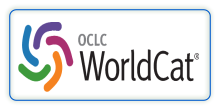HEAVY METALS IN SOIL AND VEGETABLES AND THEIR EFFECT ON HEALTH
DOI:
https://doi.org/10.29121/IJOEST.v2.i1.2017.03Keywords:
Daily Intake, Heavy Metals, Plant Uptake, Risk Assessment, Reference Dose, EDIM, EHRIAbstract
The present study was carried out to assess heavy metals Cadmium (Cd), Lead (Pb), copper (Cu), zinc (Zn), Chromium (Cr) and Nickel (Ni) levels in vegetables like Cauliflower (Brassica oleracea var. botrytis), Cabbage (Brassica oleracea), Carrot (Daucus carota), Brinjal (Solanum melongena), Spinach (Spinacia oleracea) and Radish (Raphanus sativus) irrigated with domestic wastewater. The vegetable samples were randomly collected from the farmlands irrigated with domestic wastewater around the Hisar district. Spinach, cabbage, brinjal and carrot accumulated higher Cd (1.30±0.31 mg kg-1), Pb (4.23±0.32 mg kg-1), Cu (1.42±0.25 mg kg-1), Zn (3.4±0.28 mg kg-1), Cr (1.16±0.11 mg kg-1) and Ni (2.45±0.86 mg kg-1) respectively. Transfer Factor (TF) of Cd, Pb, Cu, Zn, Cr and Ni are more in spinach (0.0306), cabbage (0.4448), spinach (0.2642), cauliflower (0.2494), carrot (0.0764) and spinach (0.7469) respectively. The health risk assessment has been calculated followed by Estimated Daily Intake Metal (EDIM) and Estimated Health Risk Index (EHRI). The present study highlights that both adults and children consuming vegetables grown in wastewater irrigated soils accumulate significant amount of these metals. However, the values of these metals were lesser than recommended maximum tolerable levels
proposed by the FAO/WHO (1999).
Downloads
References
Singh, A., Sharma, R. K., Agrawal, M., Marshall, M. L., 2010. Risk assessment of heavy metal toxicity through contaminated vegetables from waste water irrigated area of Varanasi, India, Tropical Ecology, 51(2S), and 375-387.
Wang, X.P., Shan, X.Q., Zhang, S.Z. and Wen, B. 2004. A model for evaluation of the phytoavailability of trace elements to vegetables under field conditions. Chemosphere, 55, 811–822.
Mapanda, F., Mangwayana, E. N., Nyamangara, J., Giller, K. E., 2005. The effect of long-term irrigation using wastewater on heavy metal contents of soils under vegetables in Harare, Zimbabwe. Agric. Ecosyst. Environ. 107, 151–165.
McBride, M. B., 1994. Environmental Chemistry of Soil. Oxford University Press, Inc, New York.
Mohamed, A. E., Rashed, M. N., Mofty, A., 2003. Assessment of essential and toxic elements in some kinds of vegetables, Ecotoxicology and Environmental Safety, 55(3), 251-260.
Bosso, S.T. and Enzweiler, J., 2008. Bioaccessible lead in soils, slag and mine wastes from an abandoned mining district in Brazil. Environmental Geochemistry and Health, 30, 219-229.
Fu, G., Zhou, Q., Liu, J., Liu, W., Wang, T., Zhang, Q. and Jiang, G., 2008. High levels of heavy metals in rice (Oryza sativa L.) from a typical E-waste recycling area in southeast China and its potential risk to human health. Chemosphere, 71, 1269-1275.
Lim, H.S., Lee, J.S., Chon, H.T., and Sager, M., 2008. Heavy metal contamination and risk assessment in the vicinity of the abandoned Songcheon Au-Ag mine in Korea. Journal of Geochemical Exploration, 96, 223-230.
Agbenin, J.O., Danko. M. and Welp, G., 2009. Soil and vegetable compositional relationships of eight potentially toxic metals in urban garden fields from northern Nigeria. Journal of Science Food and Agriculture, 89, 49-54.
Arora, M., Kiran, B., Rani, S., Rani, A., Kaur, B. and Mittal, N., 2008. Heavy metal accumulation in vegetables irrigated with water from different sources. Food Chemistry, 111, 811–815.
McBride M. B., 2003. Toxic metals in sewage sludge-amended soils: has promotion of beneficial use discounted the risks? Adv Environ Res., (8), 5-19.
Cao, Z. H., Hu, Z. Y., 2000. Copper contamination in paddy soils irrigated with wastewater. Chemosphere, 41 (1–2), 3–6.
Nyamangara, J., Mzezewa, J., 1999. The effects of long-term sewage sludge application on Zn, Cu, Ni and Pb levels in clay loam soil under pasture grass in Zimbabwe. Agric. Ecosyst. Environ. 73, 199–204.
Singh, K. P., Mohon, D., Sinha, S., Dalwani, R., 2004. Impact assessment of treated/untreated wastewater toxicants discharge by sewage treatment plants on health, agricultural, and environmental quality in wastewater disposal area. Chemosphere, 55, 227–255.
Nan, Z., Li, J., Zhang, Cheng, G., 2002. Cadmium and zinc interaction and their transfer in soil–crop system under actual field conditions. Sci. Total Environment, 285, 187–195.
Tripathi R. M, Raghunath R, Krishnamoorthy T. M., 1997. Dietary intake of heavy metals in Bombay city, India. Sci Total Environment, 208, 149–59.
Cui, Y. L., Zhu, R. H. Zhi, Chen, D. Y., Huang, Y. Z. And Qiu, Y., 2004. Transfer of metals from soils to vegetables in an area near a smelter in Nanning, China, Environ. Intl., 30, 785-791.
Gupta, S., Satpati, S., Nayek, S., Garai, D. 2010. Effect of wastewater irrigation on vegetavles in relation to bioaccumulation of heavy metals and biochemical changes, Environ. Monit. Assess. 165, 169-177.
IRIS, 2003. Integrated Risk Information System- database, US Envrion. Protec. Agency.
Joint FAO/WHO Expert Committee on Food Additives (1999). Summary and conclusions. In 53rd Meeting, Rome, June 1–10.
Prevention of Food Adulteration (PFA), 2000. Act no 37 of 1954. Central and State Rules as Amended for 1999, Ashoka Law House, New Delhi.
Rattan, R. K., Datta, S. P., Chhonkar, P. K., Suribabu, K., & Singh, A. K., 2005. Longterm impact of irrigation with sewage effluents on heavy metal contents in soils, crops and ground water – a case study. Agriculture, Ecosystem and Environment, 109, 310–322.
Pandey, J. Pandey, U., 2009. Accumulation of heavy metals in dietary vegetables and cultivated soil horizon in organic farming system in relation to atmospheric deposition in a seasonally dry tropical region of India, Environ Monit Assess 148, 61–74.
Sharma, R.K., Agrawal, M., Marshall, F.M., 2006. Heavy metals contamination in vegetables grown in waste water irrigated areas of Varanasi, India. Bulletin of Environmental Contamination and Toxicology, 77, 311-318.
Sridhara Chary, N., Kamala C T, Samuel Suman Raj D., 2008. Assessing risk of heavy metals from consuming food grown on sewage irrigated soils and food chain transfer. Ecotoxicology and Environmental Safety, 69, 513–524.
Liu, W.X., Li, H.H., Li, S.R., Wang, Y.W., 2006. Heavy metal accumulation of edible vegetable cultivated in agricultural soil in the suburb of Zhengzhou city, People’s Republic of China. Bulletin of Environmental Contamination and Toxicology, 76, 163-170.
Khan, S., Cao, Q., Huang Y. M. and Zhu Y. G., 2008. Health risks of heavy metals in contaminated soils and food crops irrigated with wastewater in Beijing, China. Environ. Poll. 125(3), 686-692.
Radwan, M.A. & A.K. Salama. 2006. Market based survey for some heavy metals in Egyptian fruits and vegetables. Food and Chemical Toxicology, 44: 1273-1278.
Zhuang, P., McBride, M. B., Xia, H., Li, N., Li., Z., 2009. Health risk from heavy metals via consumption of food crops in the vicinity of Dabaoshan mine, South China, Sci Total Environ, 407, 1551–1561.
World Health Organization (WHO). (1996). Health criteria other supporting information. In Guidelines for Drinking water Quality, Vol. 2 (2nd Ed.). Geneva, (pp. 31–388).
US-EPA, 2002. United States, Environmental Protection Agency, Integrated Risk Information System. http://www.epa.gov/iris/subst





























